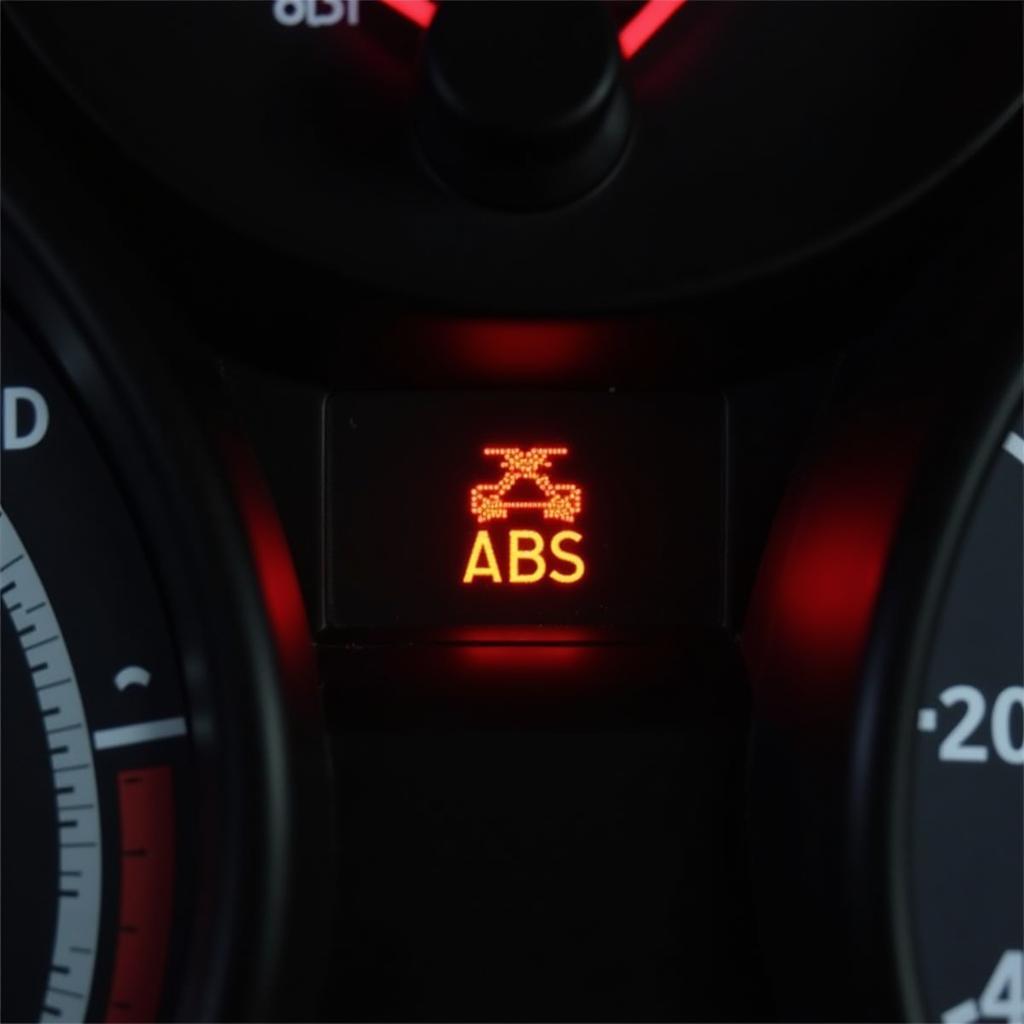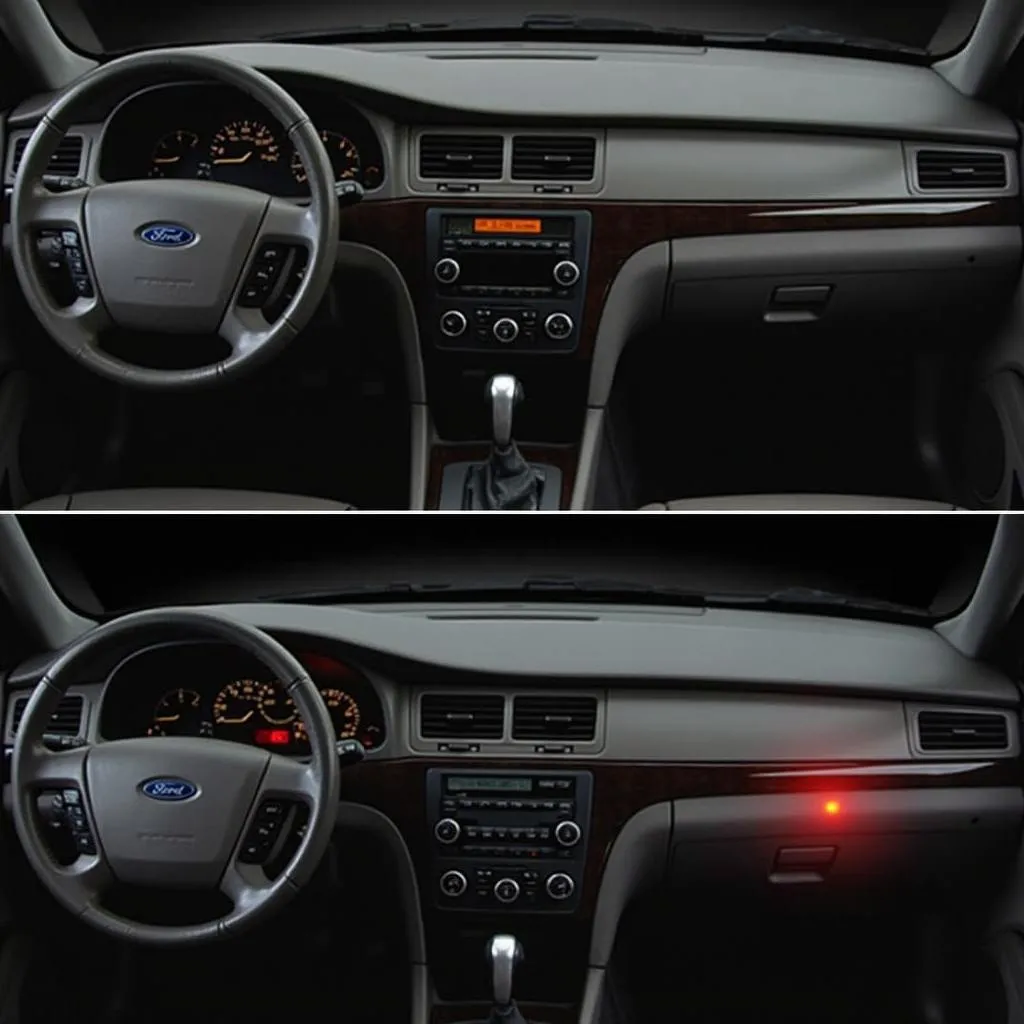The brake warning light on your dashboard is a crucial safety feature, and when it illuminates in your 2007 Chevy Equinox, it demands immediate attention. Ignoring this warning could lead to reduced braking performance and potentially dangerous driving situations. This article will delve into the common causes behind a 2007 Chevy Equinox brake warning light and provide a step-by-step guide to help you diagnose and potentially fix the issue.
Understanding Your Brake System
Before we dive into troubleshooting, it’s helpful to understand the basics of your Equinox’s braking system. The system relies on hydraulic pressure to activate the calipers, which then press the brake pads against the rotors, slowing or stopping your vehicle. Several components work together, including:
- Brake Fluid: A hydraulic fluid transmits the force from your foot on the brake pedal to the wheels.
- Master Cylinder: This component pressurizes the brake fluid when you apply the brakes.
- Brake Lines: These lines carry the pressurized fluid to the wheels.
- Brake Calipers: The calipers house the brake pads and pistons.
- Brake Pads: These pads create friction against the rotors to slow the vehicle.
- Brake Rotors: Large metal discs connected to the wheels that the brake pads clamp onto.
Common Causes of a 2007 Chevy Equinox Brake Warning Light
A glowing brake warning light can indicate several potential problems. Let’s explore the most common culprits:
1. Low Brake Fluid
One of the most frequent reasons for the brake warning light to turn on is low brake fluid. This can occur due to:
- Worn Brake Pads: As brake pads wear down, the brake calipers need more fluid to function correctly. If your pads are significantly worn, it can lead to a drop in fluid level.
- Brake Fluid Leak: A leak anywhere in the brake system, from the master cylinder to the brake lines or calipers, will result in fluid loss and trigger the warning light.
2. Worn Brake Pads
Brake pads have a limited lifespan and will eventually wear down with use. Thin brake pads not only reduce braking efficiency but can also activate the warning light.
How to check your brake pads:
- Safety First: Park on a level surface and engage the parking brake.
- Locate the Calipers: Look behind your wheels; you’ll find the brake calipers.
- Inspect the Pads: Most calipers allow you to visually inspect the brake pad thickness without disassembling anything.
- Measure If Possible: If you have a caliper measurement tool, check your owner’s manual for the minimum thickness specification for your Equinox’s brake pads.
3. Faulty Brake Pad Sensor
Some 2007 Chevy Equinox models are equipped with brake pad wear sensors. These sensors are small metal tabs embedded within the brake pad material. When the pads wear down to a certain point, the sensor comes into contact with the brake rotor, completing a circuit and triggering the warning light.
4. ABS System Malfunction
Your Equinox has an Anti-lock Braking System (ABS) designed to prevent wheel lock-up during hard braking. If the ABS system detects a problem, it can trigger the brake warning light along with the ABS warning light. Common ABS issues include:
- Faulty ABS Wheel Speed Sensor: These sensors monitor the speed of each wheel. A malfunctioning sensor can disrupt the ABS system.
- ABS Module Problems: The ABS module is the brain of the system. Internal faults within the module can lead to various ABS-related issues.
 Illuminated ABS warning light on the dashboard of a 2007 Chevy Equinox
Illuminated ABS warning light on the dashboard of a 2007 Chevy Equinox
5. Parking Brake Engaged
While seemingly obvious, sometimes the simplest explanations are overlooked. If your parking brake is even slightly engaged, it can trigger the brake warning light. Ensure the parking brake is fully released.
Troubleshooting Your 2007 Chevy Equinox Brake Warning Light
Important: If you suspect a brake fluid leak or a serious issue with your braking system, it’s crucial to have your Equinox towed to a qualified mechanic for inspection and repair. Do not attempt to drive the vehicle.
If the warning light is on, but your brakes seem to be functioning relatively normally:
- Check the Parking Brake: Make absolutely sure the parking brake is fully released.
- Inspect the Brake Fluid Level: Park your Equinox on a level surface, open the hood, and locate the brake fluid reservoir. The reservoir will have a “Min” and “Max” marking. If the fluid level is below the “Min” mark, add the correct type of brake fluid (consult your owner’s manual).
- Visual Inspection: Carefully inspect the visible brake lines and components for any signs of leaks or damage. Look for wet spots or fluid trails.
If you find yourself in a situation where you must drive a short distance with the brake warning light on:
- Drive cautiously and slowly.
- Increase your following distance.
- Be prepared to stop well in advance of intersections.
When to Seek Professional Help
If you’ve checked the basics and are unsure about the cause of the brake warning light, it’s time to call in a professional. Here are some signs that you should seek expert help:
- Soft or Spongy Brake Pedal: This can indicate air in the brake lines.
- Grinding Noises When Braking: A grinding sound usually means your brake pads are completely worn and metal is scraping against metal.
- Brake Pedal Goes to the Floor: This is a sign of a serious brake system failure.
- Vehicle Pulling to One Side When Braking: This can indicate a problem with the calipers, brake lines, or uneven pad wear.
Keeping Your Brakes in Top Condition
Preventative maintenance is key to avoiding brake system issues:
- Regular Brake Inspections: Have your brakes inspected by a qualified mechanic at least once a year, or more frequently if you drive in harsh conditions or put a lot of miles on your vehicle.
- Timely Brake Pad Replacement: Don’t wait for your brake pads to wear down completely. Replace them at the first signs of wear or as recommended by your mechanic.
- Brake Fluid Flush: Brake fluid should be flushed and replaced every 2-3 years or as recommended by your vehicle manufacturer.
Conclusion
Addressing a brake warning light in your 2007 Chevy Equinox promptly is crucial for your safety and the longevity of your vehicle. By understanding the common causes and following the troubleshooting steps outlined in this article, you can take the necessary steps to diagnose and potentially resolve the issue. However, if you are at all uncertain about tackling any brake repairs yourself, it’s always best to err on the side of caution and consult a qualified mechanic.

